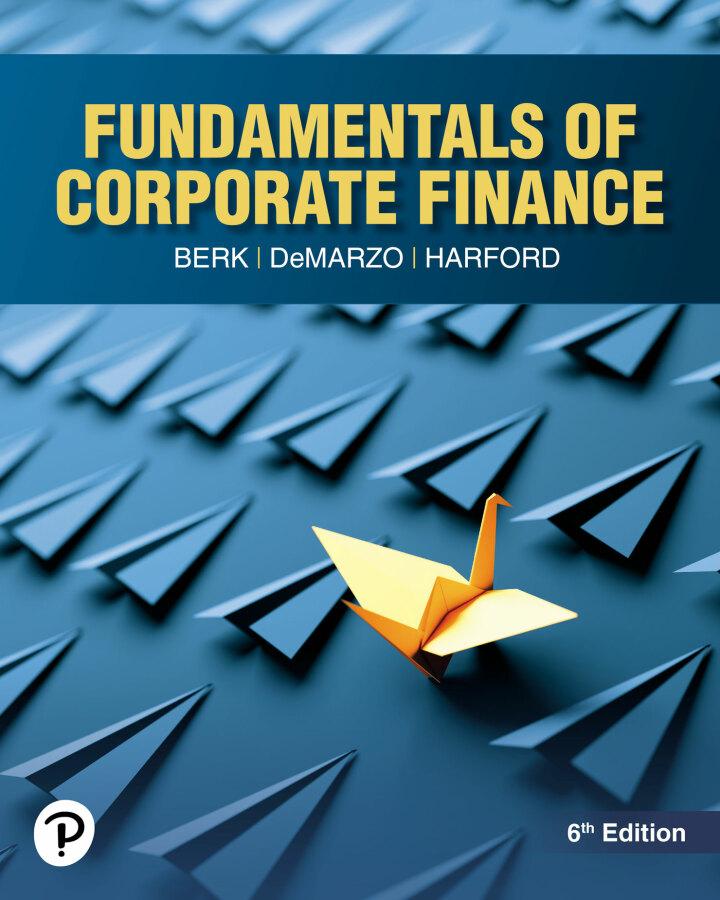As a new junior analyst for a large brokerage firm, you are excited to demonstrate the skills
Question:
As a new junior analyst for a large brokerage firm, you are excited to demonstrate the skills you learned in college and prove that you are worth your attractive salary. Your first assignment is to analyze the stock of Columbia Sportswear (COLM). Your boss recommends determining prices based on both the dividend-discount model and the discounted free cash flow valuation methods. We will discuss how to estimate a firm’s cost of capital in Chapters 12 an 13. For now, you can assume that Columbia Sportswear’s equity cost of capital can be estimated by adding a 5% risk premium to the yield on 10-year Treasury bonds. You are a little concerned about your boss’s recommendation because your finance professor explained that these two valuation methods can result in widely differing estimates when applied to real data. You are really hoping the two methods will lead to similar conclusions .
1.Using COLM’s latest financial statements, calculate the five-year historical average for the following ratios:
i. Return on equity, that is, net income/total stockholder’s equity
ii. Dividend payout rate, that is, dividend paidet income iii. EBIT/sales iv. Net property plant and equipment/sales v. Net working capital (excluding cash)/sales
2. Look up the latest revenue growth forecasts for the next five years. For missing years, linearly interpolate the growth rate between years using a long-run growth rate of 2. 5% for year 6 and beyond. Use these forecasts to forecast future sales based on the most recent year’s total revenue growing at the forecasted growth rates for the first five years. Use the long-run revenue growth rate for year 6.
3. Next, forecast EBIT for the next six years by assuming that the EBIT/sales ratio remains constant and equal to its five-year historical average.
4. Finally, forecast net income and earnings per share from EBIT using the current US tax rate of 21%.
5. You understand the limitations of the dividend discount model. Given the limitations, you don’t think it would be useful to use the model to infer the current value of COLM.
Instead, you decide to use the model and the current stock price to infer the market implied dividend growth rate.
a. Look up the yield on the 10-year Treasury bond. Add a 5% risk premium to this to estimate COLM’s cost of equity (which is also its WACC since it has no debt).
b. Begin by calculating the dividend yield, the ratio of the current dividend (annualized) to the price.
c. Infer the implied annual dividend growth rate from Eq.9.6.

d. Next calculate the implied dividend growth rate using Eq.9.12 by assuming thatfuture payout rates and returns to new investment equal the historical five-year average payout rate and average return on equity.
e. What accounts for the difference between the two estimates of the implied dividend growth rate? How might share repurchases affect these two estimates? How does the difference inform you (and your boss) about the limitations of the dividend discount model?
6. Next, calculate the implied stock value based on the discounted free cash flow method:
a. Under the assumption that the ratios in part 1 remain constant, use the average ratios computed to forecast net investment (change in sales × PPE to sales ratio)
and increases in NWC (change in sales × NWC to sales ratio) for the next six years.
b. Forecast free cash flow for the next six years using Eq.9.20.
c. Estimate the terminal enterprise value in year 5 using the free cash flow in year 6, the assumed long run revenue growth rate, and Eq.9.24.
d. Determine the enterprise value of the firm as the present value of the free cash flows.
e. Determine the stock price using Eq.9.22.
7. Even though your boss only asked you to use the dividend-discount model and discounted cash flows, you decide to use the comparables (multiples) method of valuation as well.
a. Look up Columbia Sportswear’s industry average P/E.
b. Use that P/E and the to get another estimate of Columbia’s stock’s value.
8. Compare the estimates to the actual stock price. What recommendations can you make (if any) as to whether clients should buy or sell Columbia stock based on your price estimates? Specifically, address the assumptions implicit in the model as well as those you made in preparing your analysis.
Step by Step Answer:

Fundamentals Of Corporate Finance
ISBN: 9780137852581
6th Edition
Authors: Jonathan Berk, Peter DeMarzo, Jarrad Harford





